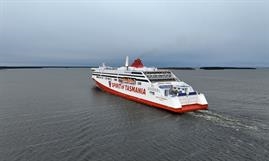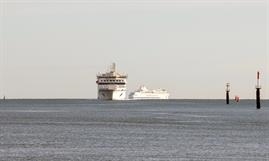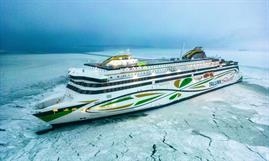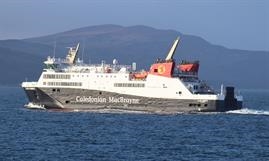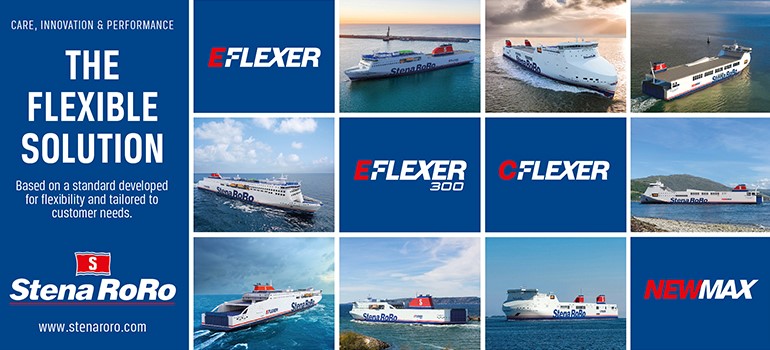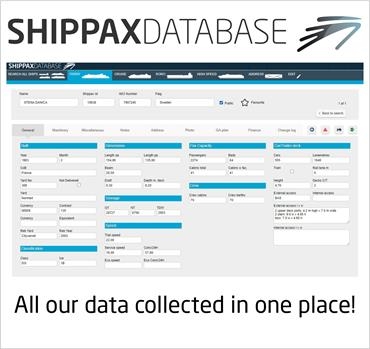
© Norwegian Ship Design Company (NSDC)
Fixing the 15%: the case for fuel cells
FerryAs we look ahead, with further regulation and changes on the horizon, shipowners and cargo owners could be excused for being perplexed by a series of simultaneous challenges – however, fuel cells can help many owners rise to these challenges, says Johan Burgren, Business Manager Marine at PowerCell Group.
The introduction of the European Union's Emissions Trading System (EU ETS) for maritime has put a price on carbon, effective from January 2024, and bills are now ramping up. US carbon regulations are set to follow suit, in addition to increased demand side pressure, and a geo-political and macro-economic picture in constant flux.
Discussion about alternative fuels, and the sustainability credentials of their supply chains, have the maritime industry making a lot of noise but now, more than ever, there is a need for practical decision making and progress. So, where can we realistically make progress today?
While the large ocean-going ships that will require new fuels make up approximately 85% of the industry's carbon footprint, it is the other 15% that are ready for decarbonisation now. According to the International Maritime Organization, the 15% of smaller shortsea vessels still represent approximately 150 million tonnes of carbon emissions emitted each year.
One sector that is part of 'the 15%' is the ro-pax ferry market. The time is right for this sector to modernise and decarbonise. According to PowerCell's analysis conducted for its HOPE 'Hydrogen fuel cells solutions in Nordic shipping' report, the European ro-pax fleet is currently an average of 38 years-old – an aging fleet ripe for clean technology retrofits and green newbuilds.
Beyond regulations, the ro-pax fleet should be driven to decarbonise by customer demand – with governments incentivising electric or hydrogen fuel cell car use, are drivers really going to happily roll on and roll off a polluting ferry? With a push for cleaner supply chains, are cargo owners really going to stand for a diesel ro-pax?
Fuel cells can be integrated into different types of vessels, including ferries, cruise ships, and smaller boats. Their versatility makes them a viable option for various marine applications, enabling the industry to transition to cleaner energy solutions across different sectors and vessel sizes.
PowerCell Group recently signed an agreement to deliver hydrogen fuel cells to the Vest fjord connection – two ships operating on Norway's longest ferry route, representing a significant milestone in for the shipping industry's energy transition. The ferry installations, owned and operated by Torghatten Nord, are one of the world's largest marine hydrogen fuel cell projects.
For smaller, shortsea vessels such as ferries there is a clear and tangible choice; the implementation of strategies that include hydrogen fuel cells. Hydrogen fuel cells are commercially ready and can serve as an effective power source for electric propulsion systems in ships, supporting the electrification of the maritime industry.
Fuel cells are highly efficient, converting chemical energy directly into electrical energy without the intermediate steps required in traditional combustion processes; meaning that there is no requirement for a combustion engine. Fuel cells also operate quietly compared to traditional combustion engines, reducing underwater radiated noise (URN) in sensitive marine ecosystems, and improving the overall experience for passengers and crew.
Maritime decarbonisation is not just about ships, it is also about onshore infrastructure. Fuel cells and hydrogen can address the question of charging infrastructure for fixed route electrified ferries. Green hydrogen infrastructure is being planned for many ports worldwide. The use of hydrogen fuel cells in port operations for auxiliary power and various onshore activities can also significantly reduce emissions and contribute to cleaner air in port cities and surrounding areas.
As regulations evolve and technology costs decrease as fuel cells become more commoditised, shipowners must constantly re-evaluate their decarbonisation options. Moreover, as the act of polluting becomes more costly, the payback period for zero-emission technology is shortened. Carbon taxes and levies are already changing the equation, but we call on regulators, cargo owners, ship owners and customers to use fuel cells to fix 'the 15%' today.
Jun 10 2024
Most read
Stena RoRo signs Letter of Intent with China Merchant Industries Weihai for 2+2+2 C-Flexer newbuilds
Oct 20 2025
Tallink’s MYSTAR bunkers bio-LNG as company targets full switch to renewable fuel by 2026
Oct 30 2025


